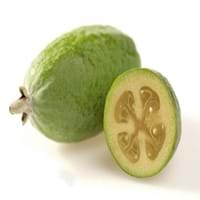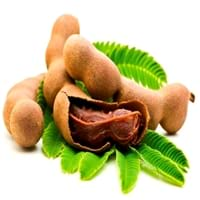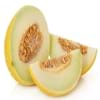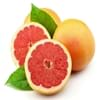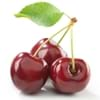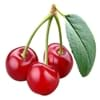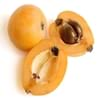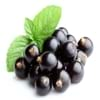Health Benefits
Anti depressant, Cancer prevention, Reduces nervous tension, Treatment of alzheimer's disease, Treatment of Lung disease
Boosts immune system, Boosts respiratory health, Cancer prevention, Digestive aid, Piles treatment
General Benefits
Digestive aid, Helps in weight loss, Improves blood circulation, Strengthens bones, Treatment of common cold
Beneficial in improving nerve function, Protects against parasites and worms, Relieves pain
Skin Benefits
Brightens and lightens complexion, Skin rejuvenation
Anti-aging benefits, Brightens and lightens complexion, Exfoliates skin, Hydrates skin, Treatment of dark spots
Hair Benefits
Promotes longer and healthier hair, Protects hair
Prevents hair loss
Allergy Symptoms
NA
Abdominal pains, Breathing difficulty, Dizziness, Eczema, Fainting, Hives, Itching, Nasal congestion, Swelling of face, Tingling sensation in mouth, Vomiting
Side Effects
Allergic reaction
Decrease in blood sugar levels, Induces acid reflux, Allergic reaction, Tooth decay, May form gallstones
Best Time to Eat
As a snack in the late afternoon, Don't consume at night and before bed, Eat the fresh ones, avoid mixing with any other foods, don't eat after meal., Morning time (before lunch)
Along with meal, As a snack in the late afternoon, Don't consume at night and before bed, Strictly avoid empty stomach
Vitamin A (Retinol)
Not Available
Vitamin B5 (Pantothenic Acid)
Vitamin C (Ascorbic Acid)
Vitamin K (Phyllochinone)
Phytosterol
Not Available
Calories in Fresh Fruit with Peel
Not Available
Not Available
Calories in Fresh Fruit without Peel
Calories in Frozen Form
Not Available
Calories in Canned Form
Not Available
Not Available
Season
Autumn, Winter
Spring, Summer
Varieties
Anatoki, Gemini, Kaiteri, Kakariki, Pounamu, Unique, Apollo, Den's Choice, Kakapo, Mammoth, Opal Star, Triumph and Wiki Tu
PKM 1, Urigam, Hasanur, Tumkur prathisthan, DTS 1 and Yogeshwari
Color
Green
Brown, Reddish-brown
Shape
Oval
Curving Cylinder
Origin
Argentina, Brazil, Paraguay, Uruguay
Africa
Grows on
Not Available
Trees
Soil Type
Clay loam, Gravely loam, Sandy
Loam, Sandy, Sandy loam, Well-drained
Climatic Conditions
Cold, Warm
Humid to dry, Rainfall, Warm to hot climate
Facts about
- Feijoa is called as "pineapple guava" in some countries.
- Feijoa tree is an ornamental plant that can also be used as hedge & windbreak.
- All parts of feijoa fruit are edible(skin is mostly discarded).
- Tamarind is used to prevent body odor.
- African children use the tamarind seeds in games.
- No cases of tamarind toxicity or allergy reported till date.
Top Producer
New Zealand
India
Other Countries
Australia, Azerbaijan, India, Japan, United States of America
Africa, Australia, Brazil, China, Mexico, Nigeria, Sudan, Taiwan
Top Importer
China
United States of America
Top Exporter
New Zealand
Thailand
Botanical Name
Acca sellowiana
Tamarindus indica
Synonym
Feijoa sellowiana or Orthostemon sellowianus
Tamarindo, tamarindus
Subkingdom
Tracheobionta
Tracheobionta
Division
Magnoliophyta
Magnoliophyta
Class
Magnoliopsida
Liliopsida
Family
Myrtaceae
Fabaceae
Species
A. sellowiana
Tamarindus indica
Generic Group
Myrtle
Tamarind Sub
Difference Between Feijoa and Tamarind
We might think that Feijoa and Tamarind are similar with respect to nutritional value and health benefits. But the nutrient content of both fruits is different. Feijoa and Tamarind Facts such as their taste, shape, color, and size are also distinct. The difference between Feijoa and Tamarind is explained here.
The amount of calories in 100 gm of fresh Feijoa and Tamarind with peel is Not Available and Not Available and the amount of calories without peel is 55.00 kcal and 239.00 kcal respectively. Thus, Feijoa and Tamarind belong to Low Calorie Fruits and High Calorie Fruits category.These fruits might or might not differ with respect to their scientific classification. The order of Feijoa and Tamarind is Myrtales and Fabales respectively. Feijoa belongs to Myrtaceae family and Tamarind belongs to Fabaceae family. Feijoa belongs to Acca genus of A. sellowiana species and Tamarind belongs to Tamarindus genus of Tamarindus indica species. Beings plants, both fruits belong to Plantae Kingdom.
